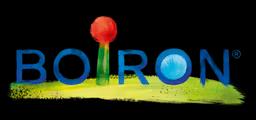FAQ
Who prescribes homeopathy? Where can i find homeopathic medicines?... Discover our practical homeopathy faq.
The emblematic form of homeopathic medicines is the tube of granules. Tubes and doses, which contain granules and globules, are the characteristic forms of homeopathy. But they are not the only ones: many homeopathic medicines also come in the form of syrups, tablets, gels, ointments, eye drops, etc.
Whatever the form of homeopathic medicines, their production is subject to the same quality and reliability requirements.
Homeopathic medicines are prescribed by healthcare professionals trained in this practice: GPs or specialists. Pharmacists can also recommend them. Since October 2011, in France midwives are entitled to prescribe homeopathic medicines for pregnancy-related illnesses.
In France, homeopathic medicines are only available from your pharmacist, who knows them and can advise you. If you wish to stock up on homeopathic medicines in your family medicine cabinet, Boiron speciality products and a few single-dose medicines can be very useful for your everyday health. Ask your pharmacist for advice.
For babies who are not yet spoon-fed, granules (or globules) must be dissolved in a little water, in a bottle or a glass.
As soon as the baby is spoon-fed, give him/her the suckable granules using the pellet counter and the content of the doses using a teaspoon, and repeat the operation several times.
Granules or globules are preferably taken before meals.
Tip for parents:
To save time, the total number of granules to be taken during the day can be diluted in one go in a water bottle, then administered to the baby the number of times indicated by the doctor.
If you melt the granules in a glass, it is easier to administer the liquid to the baby with a pipette.
Your doctor, pharmacist or midwife can prescribe a homeopathic treatment, alone or in combination with other medicines. Carefully follow their recommendations and ask them for advice if in doubt.
The “Stock” refers to the raw material used as the basis for the homeopathic medicine. The name of the stock is in Latin so that doctors all over the world can easily and accurately identify the medicines.
One of the characteristics of homeopathic medicines is that they are diluted. The figure (9 in the example below) indicates the level of dilution. In this example, 9 CH means that the raw material was diluted 9 times to a 1/100 rate (1 drop of raw material in 99 drops of alcohol-based solution).
The two letters C.H means Centesimal Hahnemannian, i.e. the dilution method developed by Doctor Hahnemann, the founder of homeopathy.
Medicines that come in tubes or doses (granules and globules) are taken orally, outside mealtimes, and melt in the mouth:
- Granules are generally taken 5 by 5, repeatedly throughout the day.
- The entire dose of globules must be taken in one go.
- The duration of the homeopathic treatment and the number of administrations are indicated on the prescription and/or the leaflet.
In all cases, the doctor’s prescription or the pharmacist’s advice must be complied with.
There are two categories of homeopathic medicines.
Certain homeopathic medicines have no therapeutic indication, dosage or leaflet. Why? In homeopathy, the same medicine can treat different illnesses (e.g. digestive disorders and insomnia) and the same affection (common cold) can be treated with different medicines, selected according to the patient. It is incumbent upon the healthcare professional to determine which ones to take and how.
These medicines with no therapeutic indication often take the form of tubes and doses (traditional forms of homeopathy) and are designated by their Latin name.
Other homeopathic medicines have a therapeutic indication. Their composition (a combination of several medicines in most cases) has been developed to treat a given problem: cold, cough, hot flushes, etc. By referring to the leaflet or packaging, patients can determine in which case they can be taken.
These medicines come in the form of tubes, doses but also tablets, gels, ointments, syrups, eye drops, etc. They do not have a Latin name but a brand name corresponding with the owner laboratory.
